Are Sharks Nocturnal?

Sharks are typically crepuscular or opportunistic feeders. Behaviors, including at night, vary by species.
©Sergey Uryadnikov/Shutterstock.com
Sharks are not generally considered nocturnal animals. While some species may exhibit increased activity during the nighttime hours, most sharks are crepuscular or opportunistic feeders. Crepuscular animals are active primarily during dawn and dusk when there is low light, whereas opportunistic feeders take advantage of food availability whenever it arises, regardless of the time of day.
Sharks have adapted to different feeding strategies and habitats, which influence their activity patterns. Some species, like the hammerhead shark, may undertake nocturnal migrations or exhibit more nighttime activity due to the availability of prey or to avoid competition with other predators. However, it is important to note that the behavior and activity patterns of sharks can vary significantly depending on the species, habitat, and environmental conditions. Therefore, it is more accurate to describe sharks as highly adaptable and opportunistic predators rather than strictly nocturnal creatures.
Can Sharks See in the Dark?
Sharks have remarkable visual adaptations that allow them to navigate and hunt effectively in various lighting conditions, including low-light environments. While they cannot see in complete darkness, many shark species possess excellent low-light vision. Their eyes are equipped with special adaptations called “rod cells,” which are highly sensitive to dim light. These rod cells enable sharks to detect contrast and movement, even in dimly lit or murky waters.
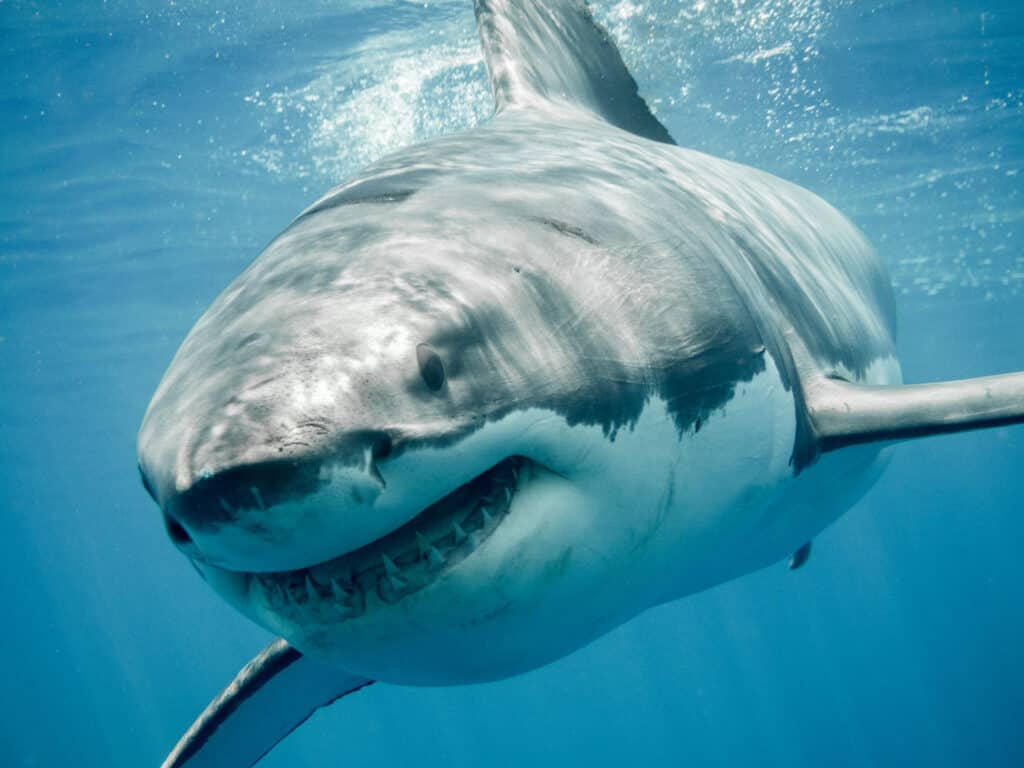
Great white sharks have adaptations that lend to their visual acuity.
©Ramon Carretero/Shutterstock.com
Some shark species, such as the great white shark, have a higher density of rod cells in their eyes, enhancing their ability to see in low-light conditions. Additionally, sharks have a structure called a tapetum lucidum, which is a reflective layer behind their retina. This layer boosts their visual sensitivity by reflecting light back through the retina, maximizing the available light for detection by the photoreceptor cells. Overall, sharks cannot see in complete darkness, but they possess adaptations that make them well-suited for detecting prey and navigating in low-light environments, allowing them to thrive in various oceanic conditions.
What Species of Sharks See the Best in the Dark?
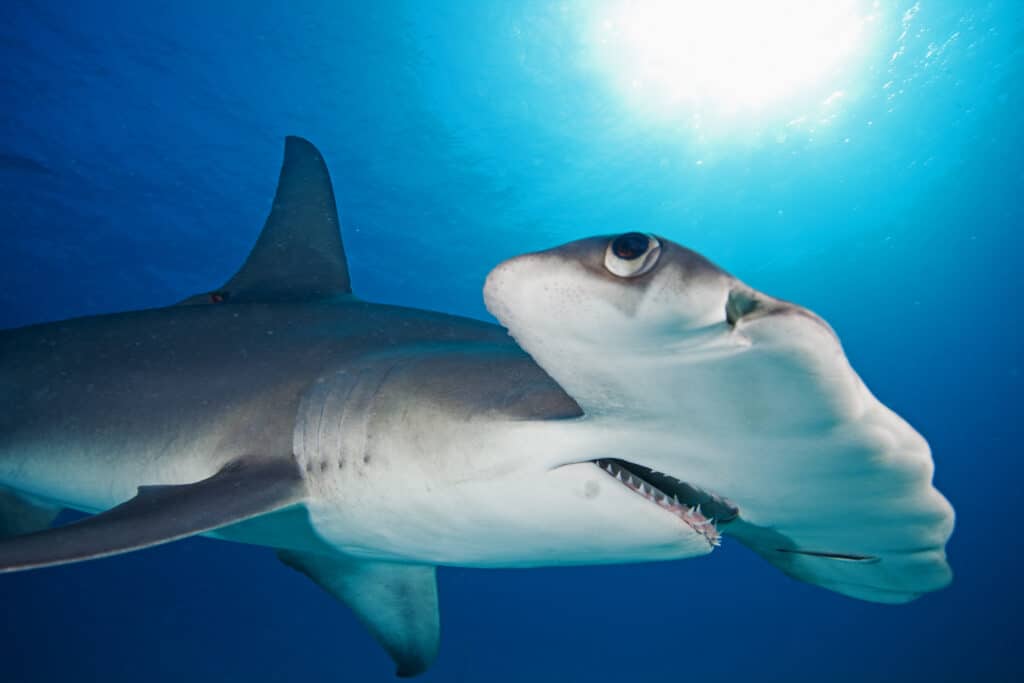
Hammerhead sharks have incredible vision, even more so than many other shark species.
©Martin Prochazkacz/Shutterstock.com
Among shark species, hammerhead sharks have particularly exceptional vision, especially in low-light conditions. Their uniquely shaped heads, known as cephalofoils, provide several advantages, one of which is enhanced visual capabilities. The wide-set eyes of hammerhead sharks give them a wider field of view, allowing for better peripheral vision, as well. They possess a larger number of rod cells in their eyes, which enhances their ability to perceive contrast and movement in dimly lit waters. The shape of their head also enables them to have better depth perception and locate prey more efficiently.
Different shark species may have specialized visual adaptations suited to their specific environments and hunting strategies. However, the hammerhead sharks stand out as a notable example of sharks with exceptional vision, particularly in low-light conditions.
What Other Sea Animals Can See in the Dark?
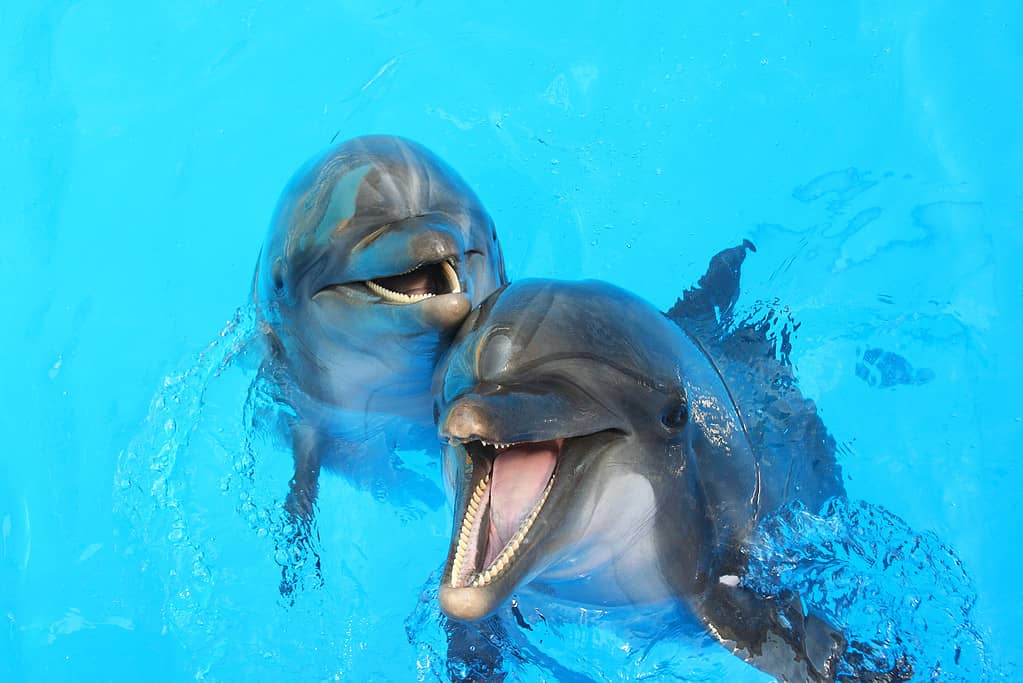
Dolphins are among many marine animals that have great low-light vision.
©Elena Larina/Shutterstock.com
In addition to sharks, several other sea animals have evolved adaptations to see in dark or low-light conditions. One such example is the adorable and intelligent marine mammal, the dolphin. Dolphins have excellent vision, aided by specialized adaptations in their eyes. They possess a large number of rod cells, similar to sharks, allowing them to see well in dimly lit underwater environments. Dolphins also have a tapetum lucidum behind their retina that reflects light back through the photoreceptor cells and enhances their sensitivity to available light.
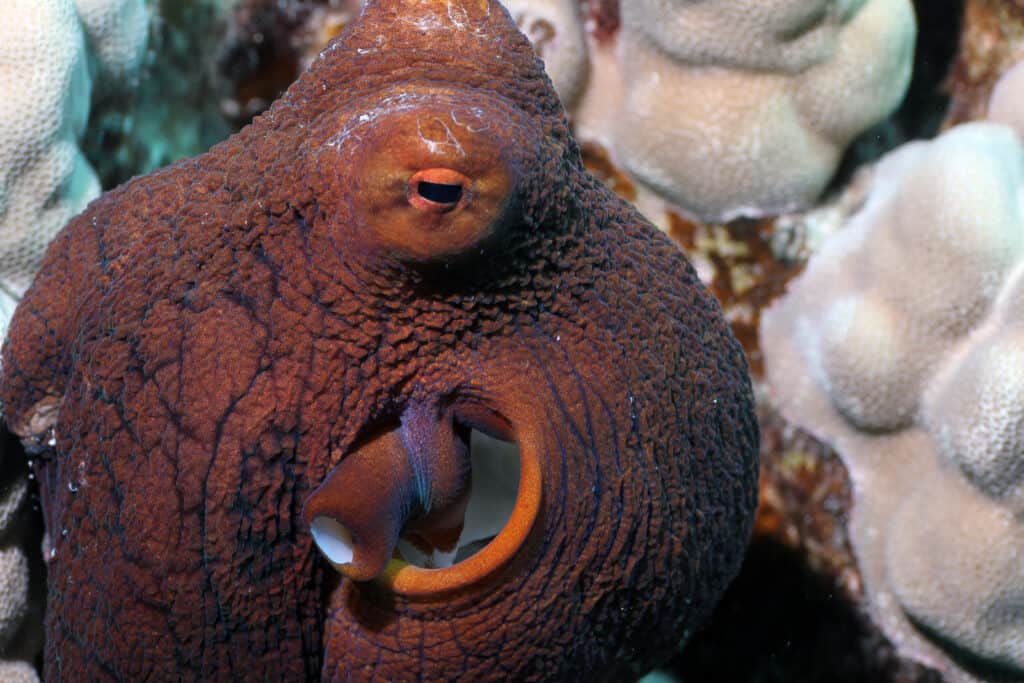
The octopus is another fascinating animal that can see in near darkness.
©Marty Wakat/Shutterstock.com
Another sea creature with remarkable low-light vision is the octopus. Octopuses have highly developed eyes and a sophisticated visual system. They possess large eyes with a high density of rod cells, enabling them to perceive objects and movement in dimly lit conditions. Additionally, octopuses can adapt their vision by adjusting the size of their pupils to control the amount of light entering their eyes.
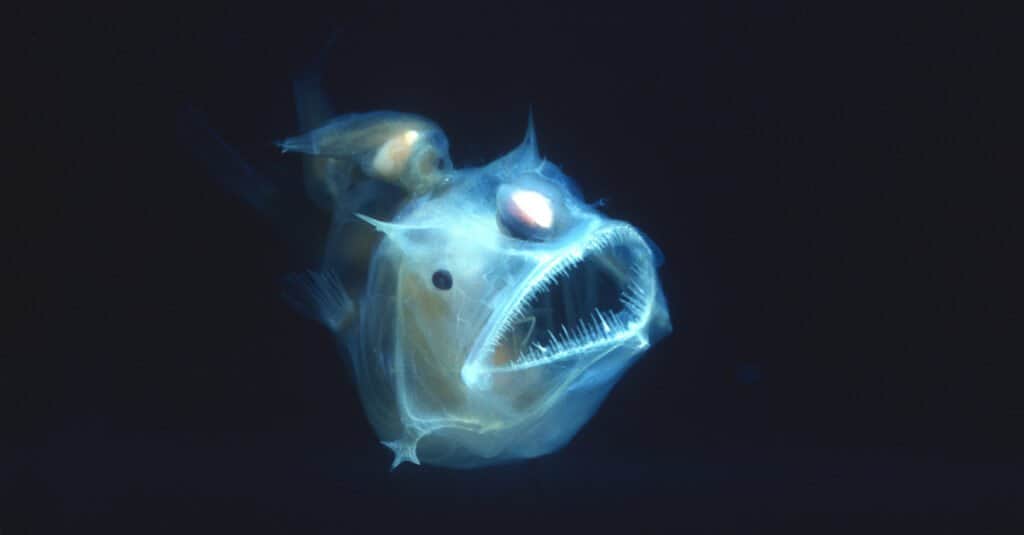
Bioluminescence is another mechanism by which animals can see in the dark, like in this
anglerfish
.
©Neil Bromhall/Shutterstock.com
Deep-sea fish, such as the anglerfish and lanternfish, also have an exceptional ability to see in the dark. These fish possess specialized bioluminescent organs that emit light, allowing them to communicate and navigate in the dark depths. Their eyes have adapted to detect and interpret this bioluminescent light, enabling them to spot prey, avoid predators, and communicate with others of their kind.
Overall, various sea animals have developed specialized visual adaptations to thrive in low-light or dark underwater environments. From dolphins with their robust vision to octopuses with their keen eyesight and deep-sea fish utilizing bioluminescence, these creatures have evolved remarkable abilities to perceive their surroundings despite the challenges of limited light in the ocean depths.
The photo featured at the top of this post is © Gary J. Wood from Toronto, ON, Canada, CC BY-SA 2.0, via Wikimedia Commons – License / Original
Thank you for reading! Have some feedback for us? Contact the AZ Animals editorial team.






